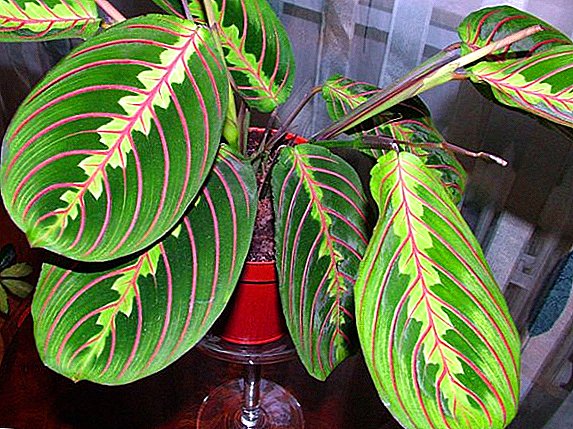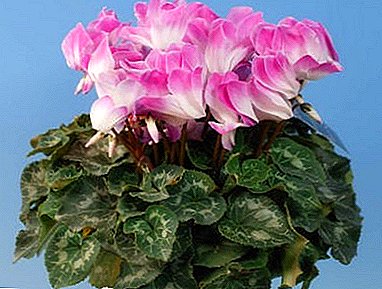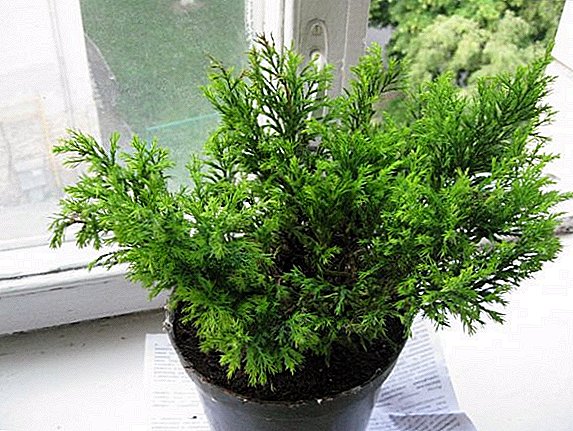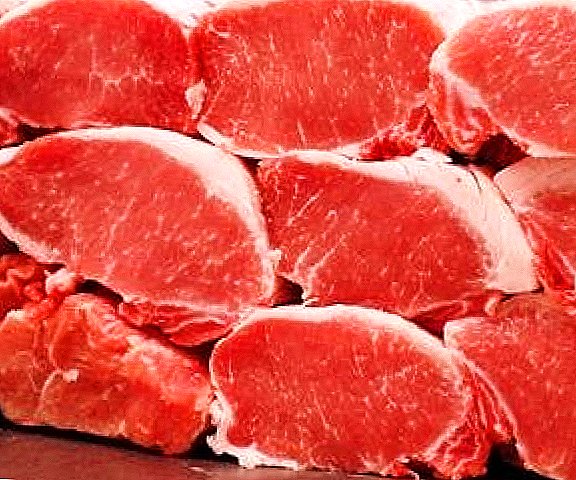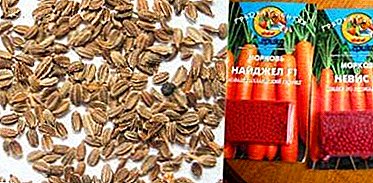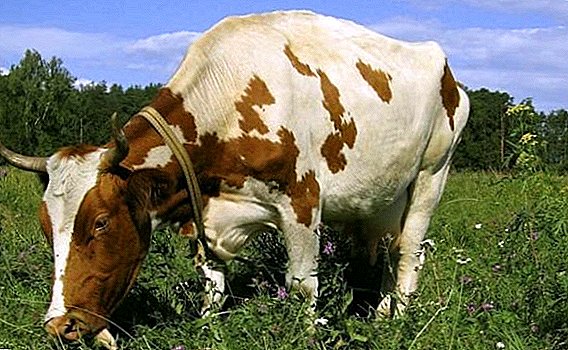 The digestive system of cows is responsible for obtaining from the feed all the necessary body substances - proteins, fats, carbohydrates, minerals and vitamins, as well as for bringing to the outside into the external environment some of the metabolic products and undigested food residues. Let's get acquainted with the unusual and complex digestion of these animals.
The digestive system of cows is responsible for obtaining from the feed all the necessary body substances - proteins, fats, carbohydrates, minerals and vitamins, as well as for bringing to the outside into the external environment some of the metabolic products and undigested food residues. Let's get acquainted with the unusual and complex digestion of these animals.
The structure of the digestive system of the cow
The cow belongs to ruminants, which, while grazing, swallow food, practically without chewing, and later, while resting, they belch it from the stomach back into the mouth and slowly, chew it carefully. That is why, watching the resting cow, you can see that almost all the time she is chewing. This method of nutrition helps the animal to efficiently use the feeding time and to extract the maximum amount of valuable substances from plant foods.
Did you know? The man tamed a cow about 8 thousand years ago. If today we place all living people on one side of the scales, and all cows and bulls on the second, then the total weight of the "horned" will almost three times exceed the weight of the population of the Earth.The digestive system of a cow consists of several parts:
- oral cavity - lips, teeth and tongue. Serves to capture, swallow and process food;
- esophagus. Connects the stomach with the pharynx, has a length of about 0.5 meters;
- stomach. It consists of four chambers and serves for the digestion and assimilation of food;
- small intestine. Enriches processed food with bile and juices, absorption of nutrients into the blood;
- colon. Serves for additional fermentation of food, education and release of fecal masses.
 Scheme of the digestive organs of cattle: 1 - parotid salivary gland; 2 - parotid salivary duct; 3 - throat; 4 - oral cavity; 5 - submandibular salivary gland; 6 - larynx; 7 - trachea; 8 - esophagus; 9 - liver; 10 - hepatic duct; 11 - cystic bile duct; 12 - gallbladder; 13 - common bile duct; 14 - grid; 15 - pancreas; 16 - pancreatic duct; 17 - abomasum; 12 - duodenum; 19 - jejunum; 20 - colon; 21 - ileum; 22 - cecum; 23 - the rectum; 24 - a hem; 25 - the book; 26 - esophageal chute
Scheme of the digestive organs of cattle: 1 - parotid salivary gland; 2 - parotid salivary duct; 3 - throat; 4 - oral cavity; 5 - submandibular salivary gland; 6 - larynx; 7 - trachea; 8 - esophagus; 9 - liver; 10 - hepatic duct; 11 - cystic bile duct; 12 - gallbladder; 13 - common bile duct; 14 - grid; 15 - pancreas; 16 - pancreatic duct; 17 - abomasum; 12 - duodenum; 19 - jejunum; 20 - colon; 21 - ileum; 22 - cecum; 23 - the rectum; 24 - a hem; 25 - the book; 26 - esophageal chuteMouth: lips, tongue, teeth
With the exception of the teeth, the entire inner surface of the buccal cavity of the cow is covered with a mucous membrane. The lips, tongue and teeth of the animal that are here are used to grab, tear, and grind plant foods. Lips and cheeks serve as a mouthpiece and perform the function of keeping food in the mouth.  The main exciting food element is the movable muscular organ - the tongue. With it, a cow captures and tastes food, helps the process of swallowing and drinking, feels various objects, cares for its body and contacts with relatives. On its surface there are many horny papillae, which perform the functions of capturing and licking food.
The main exciting food element is the movable muscular organ - the tongue. With it, a cow captures and tastes food, helps the process of swallowing and drinking, feels various objects, cares for its body and contacts with relatives. On its surface there are many horny papillae, which perform the functions of capturing and licking food.
Take a closer look at the anatomy and physiological features of cattle.
The teeth are bone enamel organs for trapping and grinding feed. The cow has no fangs, instead of which there is a hard tooth plate on the upper jaw opposite the lower incisors. This structure allows the animal to effectively pinch grass.  Arcade teeth of cattle: 1 - the body of the incisal bone; bone base of the dental cushion; 2 - toothless area (edge); I - incisors; C - fangs; P - premolars; M - molars. Calves are born with teeth, the milk jaw can hold 20 teeth, and the jaw of an adult cow - 32 teeth. Replacing primary teeth with primary teeth begins at the age of about 14 months.
Arcade teeth of cattle: 1 - the body of the incisal bone; bone base of the dental cushion; 2 - toothless area (edge); I - incisors; C - fangs; P - premolars; M - molars. Calves are born with teeth, the milk jaw can hold 20 teeth, and the jaw of an adult cow - 32 teeth. Replacing primary teeth with primary teeth begins at the age of about 14 months.
The upper jaw of the cow is wider than the lower, and the lower jaw is also adapted to perform lateral (lateral) movements. The molars of the animal form a chisel-like surface of the chafing, and due to the special movement of the jaws, the process of chewing food while chewing gum occurs more efficiently.
Important! In calves, the ruminant process starts around the third week of their life. In adult cows, chewing gum occurs 30–70 minutes after grazing or feeding, and lasts about 40–50 minutes. The average number of ruminants per day is 6-8 times.
Salivary glands and esophagus
 In the oral cavity of the cow, paired salivary glands with different localization are located: parotid, submandibular, sublingual, indigenous and supraorbital (zygomatic). Their secret contains a number of enzymes that release starch and maltose.
In the oral cavity of the cow, paired salivary glands with different localization are located: parotid, submandibular, sublingual, indigenous and supraorbital (zygomatic). Their secret contains a number of enzymes that release starch and maltose.
Next, food passes through the esophagus, which is a muscle tube with a length of about one meter. In this way, the food is first transported from the pharynx to the stomach, and then back to the mouth for chewing.
Stomach
The cow has a complex voluminous stomach consisting of four chambers:
- scar;
- grid;
- book;
- abomasum.
 The structure of the stomach of a cow. The cicatrix, the net and the book do not have glands for the production of gastric juice, they are fermented, sorted and mechanically processed feed.
The structure of the stomach of a cow. The cicatrix, the net and the book do not have glands for the production of gastric juice, they are fermented, sorted and mechanically processed feed.Scar
This is the first chamber of the stomach of the cow, which has the largest volume - 100-200 liters and even more. The scar is located on the left side of the abdominal cavity, occupying it almost completely, and is populated by microorganisms that provide the primary processing of food.  The scar consists of a double muscular layer - the longitudinal and circular, and is divided into two parts by the chute. On its mucous membrane is a lot of long ten-centimeter papillae. In this pre-stomach occurs up to 70% of the entire digestive process. The splitting of dry matter occurs due to mechanical mixing and grinding of the feed, fermentation with secrets of microorganisms and fermentation.
The scar consists of a double muscular layer - the longitudinal and circular, and is divided into two parts by the chute. On its mucous membrane is a lot of long ten-centimeter papillae. In this pre-stomach occurs up to 70% of the entire digestive process. The splitting of dry matter occurs due to mechanical mixing and grinding of the feed, fermentation with secrets of microorganisms and fermentation.
Important! The total mass of bacteria and protozoa in the stomach of an adult cow is more than three kilograms. Thanks to these microorganisms, starchy compounds and cellulose are broken down to simple sugars, which gives the cow so much needed energy.As a result, various compounds arise, part of which is absorbed through the scar wall into the blood, and then enters the liver, where it undergoes further transformations. They are also used by the udder for the synthesis of milk components. From the rumen, food gets into the net or regurgitates into the mouth for further chewing.
Grid
In the grid, food is soaked, exposed to microorganisms, and due to the work of the muscles, the ground mass is divided into large fractions entering the book, and coarse, sent to the rumen. The grid got its name due to the cellular structure, which is able to hold up large fractions of food.  This department actually performs the function of sorting and in its volume - up to 10 liters - is much inferior to the scar. It is located in the chest, in front of the scar, one edge touching the diaphragm.
This department actually performs the function of sorting and in its volume - up to 10 liters - is much inferior to the scar. It is located in the chest, in front of the scar, one edge touching the diaphragm.
In addition, the grid activates the process of belching, passing the crushed particles and returning large ones to the esophagus and then the oral cavity.
We advise you to consider the features of the structure, location and functions of the heart, udder, horns, teeth, eyes of cattle.
Book
This chamber with a volume of 10-20 liters is intended for mechanical grinding of feed, re-swallowed by animals after chewing gum. It is located in the abdominal cavity on the right, in the region of 7-9 edges of the animal. This ravine got its name because of the structure of the mucous membrane, which is the numerous folds in the form of leaflets.
This part of the stomach continues to process the already crushed coarse fiber fibers, where their final rubbing occurs and turns into mush, entering the abomasum.
Abomasum
 The rennet is a true stomach, its glands continuously form gastric juice, consisting of hydrochloric acid, pepsin, trypsin and a number of other enzymes. Under their influence, further and already final splitting of food occurs.
The rennet is a true stomach, its glands continuously form gastric juice, consisting of hydrochloric acid, pepsin, trypsin and a number of other enzymes. Under their influence, further and already final splitting of food occurs.
The abomasum with a volume of 5-15 liters is located in the abdominal region on the right, occupying space in the region of 9-12 intercostal spaces.
It is especially active in calves, since the rest of the stomach is not yet involved. Before ingestion of solid food, liquid food - milk - immediately goes into the true stomach through the gutter.
Only from the third week, when coarse components appear in the diet of young stock, belching is started, microflora is populated, and fermentation reaction occurs.
Small intestine
Coming out of the stomach, processed food enters the small intestine, which consists of three main parts:
- the duodenum (90-120 cm);
- jejunum (35-38 m);
- ileum (about 1 m).
Did you know? Cows were forced to become ruminants. They could not quickly run away from the enemy and did not have strong fangs or claws, so they developed their own way of eating: swallow as quickly as possible, not chewing, and eat and digest later in a calm atmosphere.
Enzymes that the pancreas and intestinal walls secrete process carbohydrates, fats and protein. Bile, entering the duodenum through the bile duct, helps the absorption of fat and prepares the products of digestion for absorption.
Colon
Next, the food enters the colon, represented by the following sections:
- cecum (30-70 cm);
- colon (6-9 m);
- rectum.
 Diagram of the cattle intestine: 1 - the pyloric part of the stomach; 2 - duodenum; 3 - jejunum; 4 - ileum; 5 - cecum; 6-10 - colon; 11 - rectum The caecum is the first section of the large intestine and is a reservoir located away from the main gastrointestinal tract. After digestion of food in the abomasum and small intestine, it undergoes additional microbial fermentation in the cecum.
Diagram of the cattle intestine: 1 - the pyloric part of the stomach; 2 - duodenum; 3 - jejunum; 4 - ileum; 5 - cecum; 6-10 - colon; 11 - rectum The caecum is the first section of the large intestine and is a reservoir located away from the main gastrointestinal tract. After digestion of food in the abomasum and small intestine, it undergoes additional microbial fermentation in the cecum.The next section - the colon - is divided into proximal and spiral parts. It plays a minor role in the process of digestion and absorption of nutrients. Its main function is the formation of excrement.
Important! The total length of the cattle intestine is from 39 to 63 meters, with an average of 51 meters. The ratio of the length of the body of a cow and the length of its intestines is 1:20.Intestinal microbes cause the process of fermentation of carbohydrates, and putrefactive bacteria - the destruction of the final products of protein digestion. The internal walls of the colon, despite the absence of papillae and villi for the absorption of nutrients, successfully absorb water and mineral salts.
Due to the contraction of peristalsis, the remaining contents of the large intestine through the colon enter the straight line where fecal masses accumulate. Their release into the external environment occurs through the anal canal - anus.
Thus, the complex and capacious digestive system of the cow is a perfect and harmonious mechanism. Thanks to her, animals can use both strong feeds - bran and oil cakes, and coarse, voluminous - grass and hay. And any malfunctions even in one department of the food apparatus can be reflected in all its working capacity.



